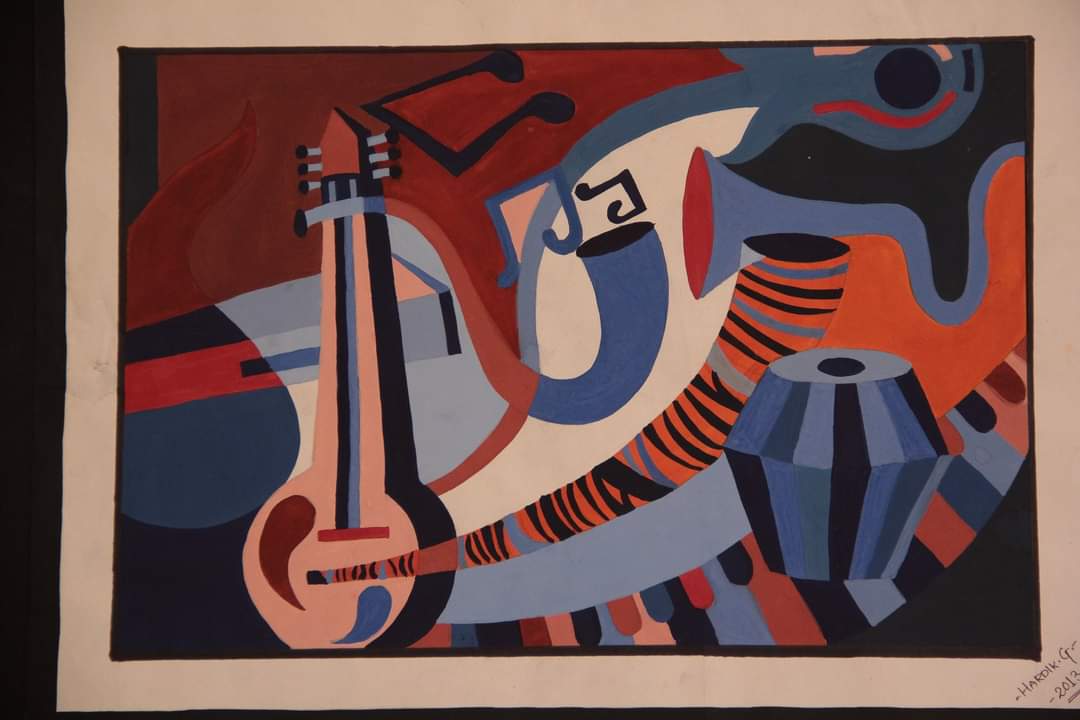What is Art?

What is Art?
If I ask you what is Art? You would think of various ways how art is inter-woven in our lives?
The first thing that will come to your mind would be paintings, drawings, sculptures. Don’t we see them commonly in art exhibitions, in furnished homes, looked at or heard about works of art created by M.F Husain, Pablo Picasso?
Don’t mistake this with the Arts we study at college. A degree or course in Arts includes subjects like History, Geography, Languages, Psychology, Sociology, Philosophy, Journalism and Mass communication.
Then what is art? When we want to find out a meaning of a word we usually refer to the dictionary. In the 21st century, Google is one of the best Enclyopedia. It gives you definitions from Merriam-Webster, Britannica, Wikipedia, Cambridge, etc… However, when you type ‘Art’ on Google, you will find millions of definitions of art. Each one has their own interpretation of art, according to Britannica —
“Art, also called (to distinguish it from other art forms) visual art, a visual object or experience consciously created through an expression of skill or imagination. The term art encompasses diverse media such as painting, sculpture, printmaking, drawing, decorative arts, photography, and installation.”
Oxford dictionary defines, art as the “expression and application of human creative skill and imagination, typically in a visual form such as painting or sculpture, producing works to be appreciated primarily for their beauty or emotional power.”
Wikipedia quotes, art is a diverse range of human activities in creating visual, auditory or performing artefacts (artworks) expressing the author’s imaginative, conceptual ideas or technical skill, intended to be appreciated primarily for their beauty or emotional power.
The first one talks about visual form of art and the different mediums to portray art, second one focuses on creative art forms that build an emotional connect and appreciated by people. The third one draws attention toward expressing through art that appeals and connects emotionally.
By now you would’ve understood that there is no single definition for art. Art has been there ever since Man was born. Over the years, however the definition of art has evolved. One of the art dated back to 3,000 B.C was the Petroglyphs or rock carvings, stone arrangements, sculptures made out of rocks.
Progressing to the Neolithic era, witnessed the growth of Pottery, Weaving, Calligraphy evolved. Gradually the written manuscript where language was used, human stick figures, silk weaving, ceramics, vase painting, metalwork, murals, designs with marine motifs, paintings of Pharaoh and the tomb, interlacing and knot work, architecture of bridges and public baths as well as amphitheatres were a part of the Roman art around 400 C.E. Elaborate carvings on the Churches and building cathedrals, glass mosaics, Gothic art which had pointed arches, small windows, thick walls, soaring ceiling. Paintings on the walls of the caves, rocks and sculptures of gods and goddesses. Renaissance year 1300, around the year 1500 Leonardo da Vinci’s paintings gained popularity, two of them named ‘The Mona Lisa’ and ‘The Last Supper’ gained importance. Soon came the printmaking era, gradually a lot of great artists were born who revamped the way we looked at art.
We all know that Art is not truth. Art is a lie that makes us realize truth – Pablo Picasso, Spanish painter living in France, quoted in Dore Ashton’s Picasso on Art (1972).
Then developed a focus on expressions, asymmetrical and abstract art to the Contemporary or the post-modern art which emphasizes style over substance. 21st century is witnessing vertical development of architecture named skyscrapers, paintings having vivid colours and rough brushwork, sculptures using stainless steel, Digital art where art meets technology to create anything through machines at one click. Whether it is digital printing or movie making, or AI powered devices that work on their own are prevalent today.
We may wonder what would be in store for the next generation, however one thing is clear and certain that art will evolve just as man does, since it is a way of expressing and creating something that is appealing and functional.
To evoke in oneself a feeling one has experienced, and…then, by means of movements, lines, colors, sounds or forms expressed in words, so to transmit that feeling—this is the activity of art – Leo Tolstoy, Russian author.
Art revolves around figures, shapes, lines, dimensions, forms, mediums, expressions. It may mean different things to people from different genres like someone who weaves carpets would say that art is a necessity, an art student at J.J School of Art would claim art to be career enhancing, whereas a person pursuing art sees art as a hobby and has fun time doing so. Therefore, the perception towards art differs from person to person and it gives us a perspective to view and experience the world. One must know how to make meaning out of it, not everyone has the skill of recognizing a true work of art and pinpoint the transformational elements used in the same. It takes an eye that is trained, especially with the abstract forms of art.
Art does not reproduce the visible; rather, it makes visible – Paul Klee (1879–1940), Swiss painter.
A wonderful piece of art is one that has a subtle message within and looks aesthetically appealing to the eye. Artists usually build an emotional connect with the audience so as to attract their attention and convey the message.

